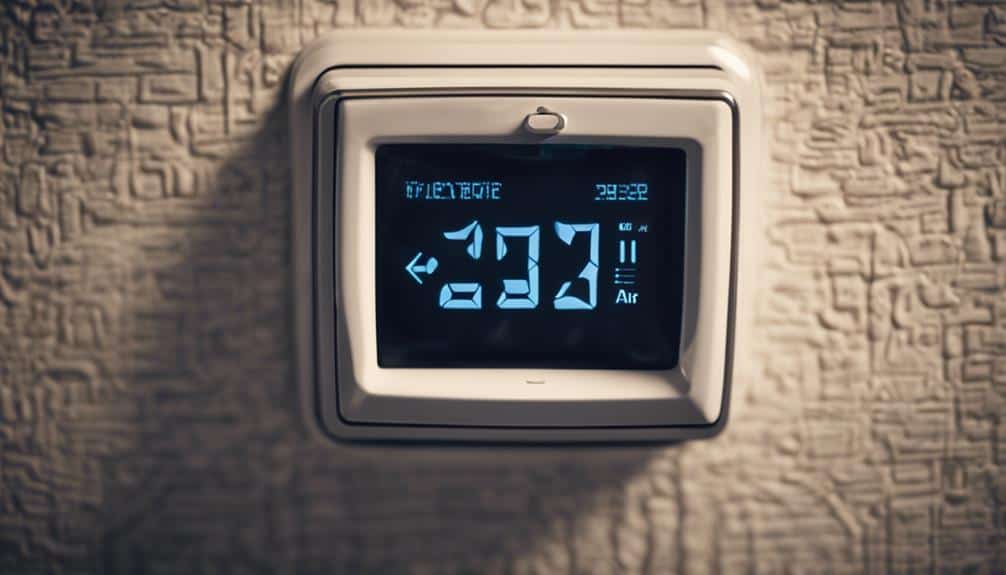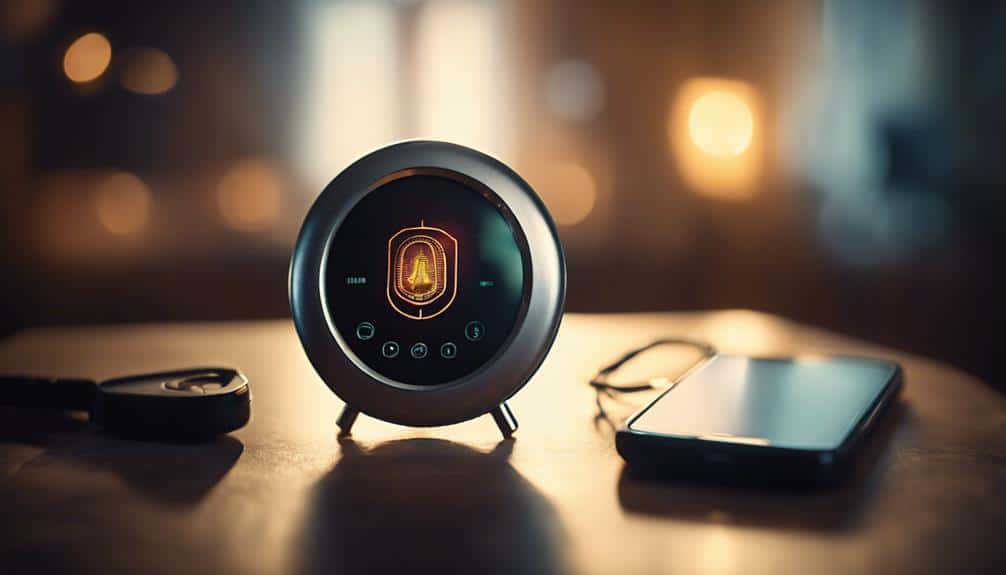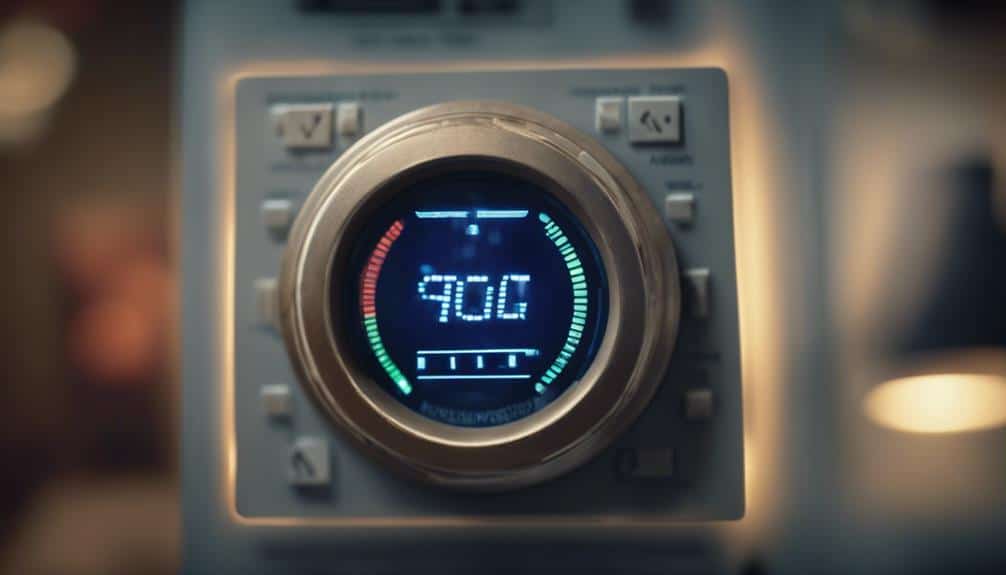Imagine a digital fortress surrounding your thermostat, keeping the digital marauders at bay. You've worked hard to make your home smart and comfortable, but without the right defenses, hackers could turn your sanctuary into a playground.
Here's where I step in with five essential tips to armor your thermostat. From securing your Wi-Fi network to fortifying your passwords, these strategies aren't just about safeguarding a device; they're about protecting your peace of mind.
Curious about how to layer these defenses effectively? Let's explore together how to keep your digital hearth safe and sound.
Key Takeaways
- Regularly update thermostat firmware to patch security vulnerabilities.
- Create strong, unique passwords for your thermostat and network devices.
- Enable Multi-Factor Authentication (MFA) to add an extra layer of security.
- Monitor network activity for any unauthorized access or unusual behavior.
Secure Your Wi-Fi Network
To protect your thermostat from hackers, start by securing your Wi-Fi network with WPA3 encryption, ensuring it's both safe and reliable.
Change your router credentials from the default to strong passwords that are hard to guess. This simple step greatly reduces security risks.
Don't forget to enable firewall protection on your network for an added layer of defense against unwanted intrusions.
For devices like your thermostat, consider setting up a guest network. This isolates your IoT devices from your personal data, limiting potential breaches.
Finally, although it's tempting to set and forget, regularly updating your router with the latest security patches is essential. These updates fix vulnerabilities that hackers exploit.
Including multi-factor authentication can further bolster your network's security.
Update Thermostat Firmware

Regularly updating your thermostat's firmware is a key step in keeping it secure against hackers. By doing so, you're not just enhancing your smart home security; you're also addressing any security vulnerabilities that could leave your system open to cyberattacks and unauthorized access.
Manufacturers roll out firmware updates not just to improve your device's performance, but also to patch up any security weaknesses they've identified. Think of these updates as a proactive measure to protect your home's digital doorway.
Without these security patches, your thermostat firmware could become a backdoor for hackers. So, always stay on top of these updates to make certain your thermostat remains a guardian of comfort, not a gateway for trouble.
Strengthen Passwords

After ensuring your thermostat's firmware is up to date, it's time to focus on strengthening your passwords, an equally important step in safeguarding your device.
Your Smart Thermostat is a key part of your Home's security. To protect it from hackers, create a unique password mixing uppercase, lowercase, numbers, and symbols. Avoid common or guessable passwords that offer an easy in for intruders.
By regularly updating your password, you'll further strengthen your device's defenses. Remember, a strong password acts as the first line of defense in keeping your Smart Home devices secure.
Enable Multi-Factor Authentication

Adding multi-factor authentication (MFA) to your smart thermostat greatly enhances its defense against unauthorized access. By enabling MFA, you add an extra layer of security that requires multiple forms of verification. This means even if someone gets ahold of your password, they won't easily gain control over your device.
Consider using authenticator apps like Google Authenticator or Authy, which generate time-sensitive codes. These codes change every few minutes, adding a robust barrier against hackers. Alternatively, SMS-based MFA sends a unique code to your phone, ensuring only you can access your account.
Implementing MFA on your smart home devices, including your thermostat, substantially enhances security, helping you stay a step ahead of hackers.
Monitor Network Activity

To safeguard your smart thermostat, it's crucial you monitor network activity for any signs of hacking. Keeping a watchful eye helps you detect unusual behavior, unauthorized connections, and suspicious data transmissions. Here's how you can stay ahead:
- Review Access Logs: Regularly check access logs to catch unauthorized entries early.
- Analyze Network Traffic Patterns: Stay alert to changes in network traffic patterns that could signal a security threat.
- Use Network Monitoring Tools: Implement tools designed to track and report on incoming and outgoing data, enhancing your thermostat security.
Frequently Asked Questions
How Do I Protect My Smart Thermostat?
To protect your smart thermostat, regularly update its firmware and use secure passwords. Enable two-factor authentication, and employ encryption methods. Consider network segmentation and guest networks for added safety. Don't forget about device audits and VPN usage.
What Is Easiest Way to Protect Against Hackers?
To easily protect against hackers, regularly update your firmware and use strong passwords. Enable two-factor authentication and make sure your network is secure with encryption. Also, consider device isolation and monitor traffic for extra safety.
Can Someone Hack My Thermostat?
Yes, your thermostat's vulnerabilities can be exploited by hackers. To protect it, update its firmware, use strong passwords, enable two-factor authentication, and guarantee your network's segmentation. Don't overlook the importance of physical security and encryption.
Are Smart Plugs Safe From Hackers?
Smart plugs aren't immune to hackers. You'll need strong passwords, encryption, firmware updates, and two-factor authentication to stay safe. Also, check device compatibility and manufacturer support while keeping your Wi-Fi protected.
Conclusion
You've got the power to keep your thermostat safe from hackers. Start by securing your Wi-Fi network; it's your first line of defense.
Don't forget to regularly update your thermostat's firmware to patch any vulnerabilities.
Strong, unique passwords are a must, and enabling multi-factor authentication adds an extra layer of security.
Finally, keep an eye on your network activity to catch any suspicious behavior early.
By taking these steps, you're not just protecting your thermostat, you're safeguarding your peace of mind.

